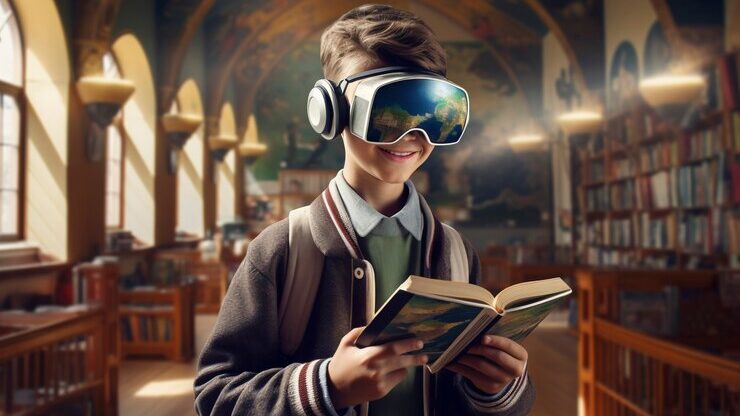
In recent years, Augmented Reality (AR) has captured the imagination of various industries, and education is no exception. By overlaying digital content on top of the physical world, AR offers an immersive and interactive experience that can revolutionize the way students learn. This technology holds vast potential to enhance educational experiences, making learning more engaging, accessible, and effective.
As AR becomes more integrated into educational environments, it allows for a deeper connection between theoretical concepts and real-world applications. For instance, students studying architecture can visualize their designs in 3D and walk through them before constructing a physical model. Similarly, students of chemistry can manipulate virtual atoms and molecules, gaining a clearer understanding of chemical reactions.
Beyond the classroom, AR also allows students to bring their learning into the real world. Virtual field trips, where students can explore famous landmarks or historical sites, give them a more tangible sense of the world beyond textbooks. These experiences not only spark curiosity but also allow for a more personalized learning experience. With AR, the world truly becomes a classroom without limits.

What is Augmented Reality?
AR blends the real world with digital elements, allowing users to interact with virtual objects or information that are integrated into their environment. Unlike Virtual Reality (VR), which creates an entirely virtual environment, AR enhances the existing world by adding layers of information that can be seen through devices like smartphones, tablets, or AR glasses. This seamless fusion of the digital and physical realms helps create a more intuitive learning experience. Students can explore complex concepts by visualizing them in real time, fostering a deeper understanding of subjects that are often abstract or difficult to grasp. As AR technology advances, its applications in education will likely expand, making it an essential tool for both educators and students a like.
Enhancing Engagement and Motivation
Traditional teaching methods often struggle to engage students who may find textbooks and lectures less stimulating. AR can transform this experience by making lessons come to life. Imagine a history lesson where students can view 3D models of ancient monuments or a science class where students can interact with virtual molecules. Such immersive experiences help bring complex subjects to life, making them more interesting and easier to understand. When students are motivated and engaged, their retention of knowledge improves significantly.
Special Education Support
One of the most significant benefits of AR in education is its potential to support students with disabilities. AR can provide customized learning experiences for students with special needs. For instance, students with dyslexia can use AR tools that highlight text and provide interactive visuals to help with reading comprehension. Similarly, AR can offer visual aids for students with learning disabilities, creating a more inclusive and supportive learning environment.

Breaking Language Barriers
Language can often be a barrier to effective learning, especially in multicultural classrooms. AR can provide real-time translations of text or speech, making it easier for students who speak different languages to access and understand content. This is particularly useful in international schools or for students learning a second language, as AR can instantly translate educational materials, making learning more accessible.
